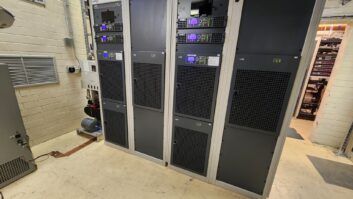GatesAir has introduced a timing and signal reference solution for broadcast and telecom uses.
It is intended for any transmission, networking or studio component that requires a timing source. The box can feed the timing source to 12 components.
“The new Maxiva GNSS-PTP is a standalone 1RU solution with a sophisticated switching algorithm that assures high-precision 10 MHz and 1 PPS reference signals to mission-critical components in the signal chain, including transmitters, networking and studio equipment,” the company stated.
Each device feeds up to a dozen 10 MHz and 1 PPS references in a technology infrastructure. “This substantially reduces equipment costs and installation timelines while providing a single, yet highly redundant, point of failure for engineers,” it said.

The design includes redundant AC power supplies with battery back-up and diverse timing sources including redundant GNSS receivers.
Those receivers include OCXO temperature control to prevent frequency changes, and support major global satellite constellations including GPS, GLONASS, Galileo and QZSS.
[Check Out More Products at Radio World’s Products Section]
Timing sources include a hardware-based PTP module and an external 10 MHz and 1 PPS reference. Switching control logic ensures reliability and flexibility for selecting the highest priority source as a reference.
“Support for the Precision Time Protocol v2 (PTP) adds further reliability and flexibility for customers,” the company continued. “Available as a modular option, users can prioritize PTP as a facility’s primary source, or configure PTP as a backup to one of the GNSS receivers.”
The PTP module can function as a master or slave and, same as the unit’s GNSS receivers, provide reliable timing and frequency reference to 12 external devices.
An integrated web interface allows users to select frequency bands for each GNSS system and configure timing source selection in automatic and manual modes. The interface offers visual aids such as tracking maps and tables, satellite status and signal quality.










